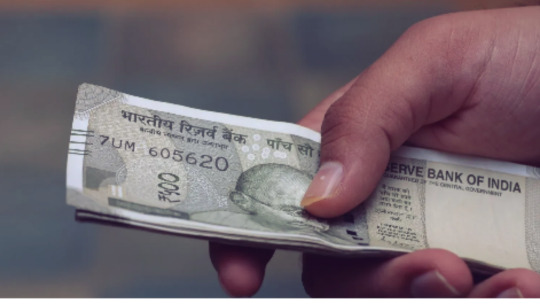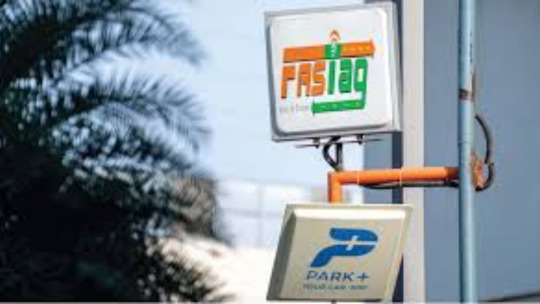Don't wanna be here? Send us removal request.
Text
0 notes
Text
0 notes
Text
0 notes
Text
0 notes
Text
0 notes
Text
0 notes
Text
0 notes
Text
0 notes
Text
0 notes
Text
0 notes
Text
0 notes
Text
0 notes
Text
Dormant Bank Accounts: Your Guide to Reactivation & Fund Withdrawal

How to Reactivate and Withdraw Funds from Dormant Bank Accounts
It's surprisingly common for bank accounts to become inactive or dormant. Life happens – you might move, forget about an old account, or switch banks. If you don't make any customer-initiated transactions for a certain period (usually 12 months), your account becomes inactive. If this inactivity stretches even longer, typically over 24 months, your account is then classified as dormant or inoperative.
It's important to note that only customer-initiated transactions (like debits or credits) count towards activity. Any interest credited by the bank or charges deducted won't prevent your account from becoming inactive.
While banks won't close these accounts, they do restrict services such as debit card use, net banking, and ATM withdrawals for security reasons. Thankfully, banks usually notify you before your account goes dormant and provide instructions for reactivation.
You can absolutely still access the funds in a dormant account, though it requires a few extra steps. Here's how:
Steps to Reactivate Your Account and Withdraw Funds
Contact Your Bank: Your first step is to visit the nearest branch of your bank. While some banks might offer online reactivation, most require an in-person visit for verification and security. Make sure to bring a valid ID (like your passport, Aadhaar card, or driver's license) and your bank passbook/account number. If your address has changed, bring proof of your new address as well.
Submit a Reactivation Request: At the bank, you'll need to submit a written request to reactivate your account. The bank will likely ask for an updated KYC (Know Your Customer) verification to confirm you're the rightful account holder. Some banks might allow for video KYC or a call verification to complete this step.
Withdraw Your Funds: Once your account is successfully reactivated, you can withdraw your funds as you normally would. This includes cash withdrawals directly from the bank or fund transfers via NEFT or UPI. After accessing your funds, you can even choose to close the account if you no longer need it.
Important Things to Know
No Penalties: As per RBI guidelines, banks cannot charge any penalties for reactivating dormant or inactive accounts.
Continued Interest: You'll continue to earn interest on your funds even while your account is dormant or inactive.
Funds Transferred to DEAF: If your account remains inactive for over 10 years, your funds will be transferred to the Reserve Bank of India’s Depositor Education Awareness Funds (DEAF). However, you can still claim them by contacting your bank with the proper documentation.
How to Prevent Your Account from Becoming Dormant
Keeping your account active is straightforward. Simply ensure you make customer-initiated transactions every few months. Linking your bank account to a mobile wallet or UPI app and making regular small transactions is an easy way to prevent it from becoming inactive.
The process of reactivating and withdrawing funds from a dormant account might seem a bit involved, but these steps are crucial for protecting your funds and preventing any unauthorized activity.
Do you have any old accounts you're looking to reactivate?
#BankAccounts#DormantAccount#Reactivation#PersonalFinance#BankingTips#FinancialLiteracy#RBI#MoneyManagement
0 notes
Text
Rental Income & ITR: Your Guide to E-filing for FY 2024-25 (AY 2025-26)

Filing ITR for Rental Income in India: What the E-filing Portal Needs from You (FY 2024-25 / AY 2025-26)
Good news for Indian taxpayers! While the e-filing portal continues to get smarter with pre-filled details from Form 16 and your Annual Information Statement (AIS), you'll still need to provide crucial information, especially when it comes to your rental income. This is even more vital given the recent changes in ITR forms for the current Financial Year 2024-25 (Assessment Year 2025-26).
Just like claiming HRA exemption under the old tax regime requires specific inputs, so does declaring "Income from House Property." If you're a landlord, or simply own a house, pay close attention!
The Income Tax Department's e-filing portal will show you pre-filled amounts, but it now asks for a detailed breakdown. As the portal states, "We have pre-filled this value from Form-16/ AIS (Annual Information Statement) wherever applicable. You are required to provide the breakup in order to consider this amount."
This means you'll be actively verifying and entering details to accurately calculate your tax liability. Here's a clear guide to what you'll need to provide:
Essential Details for "Income from House Property"
The e-filing portal will guide you through these key fields to determine your final tax:
How the Portal Calculates Your Taxable Income:
Important Note on Home Loan Interest (Section 24(b)):
What to Provide for Section 24(b) - Interest on Borrowed Capital:
To claim this crucial deduction, be ready with these specifics:
Get Ready to File!
Both salaried individuals and others can now file ITR-1 and ITR-4 forms online for FY 2024-25 (AY 2025-26) directly on the Income Tax Department's e-filing portal. You can also use various authorized tax-filing websites.
The due date for taxpayers who do not require an audit is September 15, 2025. Don't miss it!
0 notes
Text
Government Fine-Tunes FASTag: Enhancing Efficiency for a Better Commute

No worries about those new FASTag rules! The Ministry of Road Transport & Highways just cleared things up, saying the recent circular from the National Payments Corporation of India (NPCI) won't mess with your experience at toll plazas.
Recharge Anytime, Anywhere (Well, Almost!)
Forget those rumors about your FASTag being declined if it's inactive for a bit. You can recharge your FASTag anytime before hitting a national highway toll plaza. This is because all national highway tolls use the ICD 2.5 protocol, which provides real-time tag status. So, your recharge gets recognized instantly.
What's the NPCI Circular Really About?
The NPCI's circular, effective February 17, 2025, isn't there to trip you up. Instead, it's designed to smooth out disputes between banks regarding FASTag status and to make sure transactions are processed quickly after you pass through a toll. It's all about making the system more efficient behind the scenes.
State Highways Getting an Upgrade
While national highways are good to go, some state highway tolls still use an older system (ICD 2.4 protocol) that needs periodic updates for tag status. But don't fret – the government plans to upgrade all these state highway tolls to ICD 2.5 soon.
Go Auto-Recharge for Ultimate Convenience!
To make life even easier, the ministry is pushing for users to link their FASTag wallets to UPI, current, or savings accounts with an auto-recharge facility. This way, you won't even have to think about manual recharges. Of course, you can still recharge manually using UPI and net banking if that's your jam.
Essentially, the government wants you to know that FASTag is still all about seamless, electronic toll payments, reducing congestion, and making your journeys smoother. These new clarifications are just about fine-tuning the system, not creating hurdles for you!
0 notes
Text
Highway Savings Alert! New FASTag Annual Pass Launches August 15th

Big News for Indian Commuters: FASTag Annual Pass Coming August 15th
Get ready to make your highway travel smoother and more affordable! Union Road and Transport Minister Nitin Gadkari announced on June 18th that the Ministry of Road Transport & Highways will launch a FASTag-based annual pass for private vehicles, effective August 15th.
This game-changing pass will cost ₹3,000 and be valid for one year or up to 200 trips, whichever comes first. It’s designed for non-commercial private vehicles like cars, jeeps, and vans, promising significant savings and reduced waiting times at toll plazas.
“This ₹3,000 pass is good for non-commercial vehicles such as automobiles, jeeps, and vans and is valid for a year or up to 200 trips, whichever comes first,” Gadkari shared on X.
For frequent travelers, this pass is a real money-saver. Imagine paying just ₹15 per toll crossing on average. If you currently spend ₹50 per crossing, this pass could save you up to ₹7,000 annually for 200 trips! Plus, it’s expected to ease congestion and minimize disputes at toll plazas, leading to a much faster and smoother travel experience.
Gadkari emphasized, “This policy addresses long-standing concerns regarding toll plazas located within a 60 km range and simplifies toll payments through a single, affordable transaction.”
Your FASTag Annual Pass Questions Answered:
Here are the most frequently asked questions about the new FASTag annual pass:
1. What exactly is FASTag? FASTag is a digital sticker you put on your vehicle that enables automatic toll payments. It uses Radio Frequency Identification (RFID) technology, linking to a prepaid account. You can easily recharge it via UPI apps and online portals, including the My FASTag app.
2. How much could I save with this annual pass? Priced at ₹3,000 for a year or 200 trips, you’ll effectively pay around ₹15 per crossing. If your typical toll fee is higher (e.g., ₹50), you could save up to ₹7,000 over 200 trips! The more expensive your usual tolls, the more you save.
3. Where can I get this annual pass? You can purchase the annual pass through the Rajmargyatra mobile application or the official National Highways Authority of India (NHAI) website.
4. Am I eligible for the annual pass? To be eligible, your FASTag must be properly affixed to your vehicle’s windshield and linked to a valid Vehicle Registration Number. If your FASTag is blacklisted, you won’t qualify.
5. How do I activate my annual pass? You’ll need to verify your vehicle and existing FASTag. If eligible, you can activate the pass on your current FASTag by paying ₹3,000 via the Rajmargyatra app or NHAI website. Once payment is confirmed, it’s active!
6. Do I need a new FASTag for this pass? No, you can activate the annual pass on your existing FASTag, provided you meet the eligibility criteria.
7. Which toll plazas are covered by the annual pass? The pass is only valid at national highway and national expressway fee plazas. It will not work on state-maintained expressways or highways.
8. Does this mean I’ll need two separate FASTags? No. While the annual pass covers national highways, your existing FASTag will still function normally on state-maintained roads, allowing you to pay tolls as usual through the same tag.
9. What happens after 200 trips, or after a year? Can I renew? Yes! The pass is valid for one year or 200 trips, whichever comes first. You can reactivate it by paying ₹3,000 again. If you don’t reactivate, your tag will revert to a regular FASTag, and standard fees will apply. If you hit 200 trips before the year is up, you can simply repurchase the pass for another ₹3,000.
10. Is this annual pass mandatory? No, it’s optional. You can continue using your FASTag for regular transactions at standard rates if you don’t opt for the annual pass.
11. Is the annual pass available for all vehicle types? No, it’s only for non-commercial private cars, jeeps, and vans. Using it in a commercial vehicle will lead to immediate deactivation.
12. How is a “trip” counted under the annual pass? On open national highways, crossing a toll plaza counts as one trip. A round trip (to and fro) counts as two trips. On closed national highways, entry and exit together count as one single trip.
13. Is the annual pass transferable? No, the annual pass is non-transferable. It’s valid only for the specific vehicle on which the FASTag is affixed and registered. Ensure your FASTag is properly affixed and linked to your Vehicle Registration Number (not just a chassis number).
Ready to experience a new level of convenience and savings on your highway journeys? Let us know if you have any more questions!
0 notes
Text
Gold's Glitch: How a Global Commodity Distorts India's Inflation Picture

You've highlighted a crucial point about India's inflation landscape. While the dip in headline CPI inflation to 2.8% in May 2025 is certainly good news, CRISIL's report reveals a subtle but significant concern: core inflation (excluding volatile food and fuel prices) is quietly on the rise.
Understanding the Nuance: Headline vs. Core Inflation
The decline in headline inflation is primarily driven by cooling food prices. This offers some relief, as food accounts for a substantial portion of the average Indian household's expenditure. However, core inflation has consistently stayed above 4% for the past four months. While still below the ten-year average, this upward trend in core inflation is a key indicator to watch.
What's Driving Core Inflation?
Typically, a rise in core inflation signals strengthening domestic demand. However, CRISIL's analysis suggests that global economic volatility, rather than purely domestic factors, is largely responsible for this recent uptick.
The Gold Conundrum in India's Core Inflation
A particularly interesting point raised by CRISIL is the role of gold prices in India's core inflation calculation. Gold, being a global commodity, reacts to international signals, not domestic ones. Yet, it carries a relatively higher weight in India's core CPI compared to other countries. This inclusion, according to CRISIL, can distort the true picture of domestic price signals. Other major central banks also include gold in their core inflation, but its lower weight limits its impact. CRISIL believes that excluding gold from core CPI would offer a more accurate reflection of underlying domestic price pressures, preventing potential misinterpretations.
This situation presents a complex picture for policymakers. The cooling headline inflation offers breathing room, but the persistent rise in core inflation, especially if it's influenced by external factors and methodological nuances like gold's weight, requires careful monitoring.
What are your thoughts on how central banks should factor in global commodity prices like gold when assessing core inflation?
0 notes